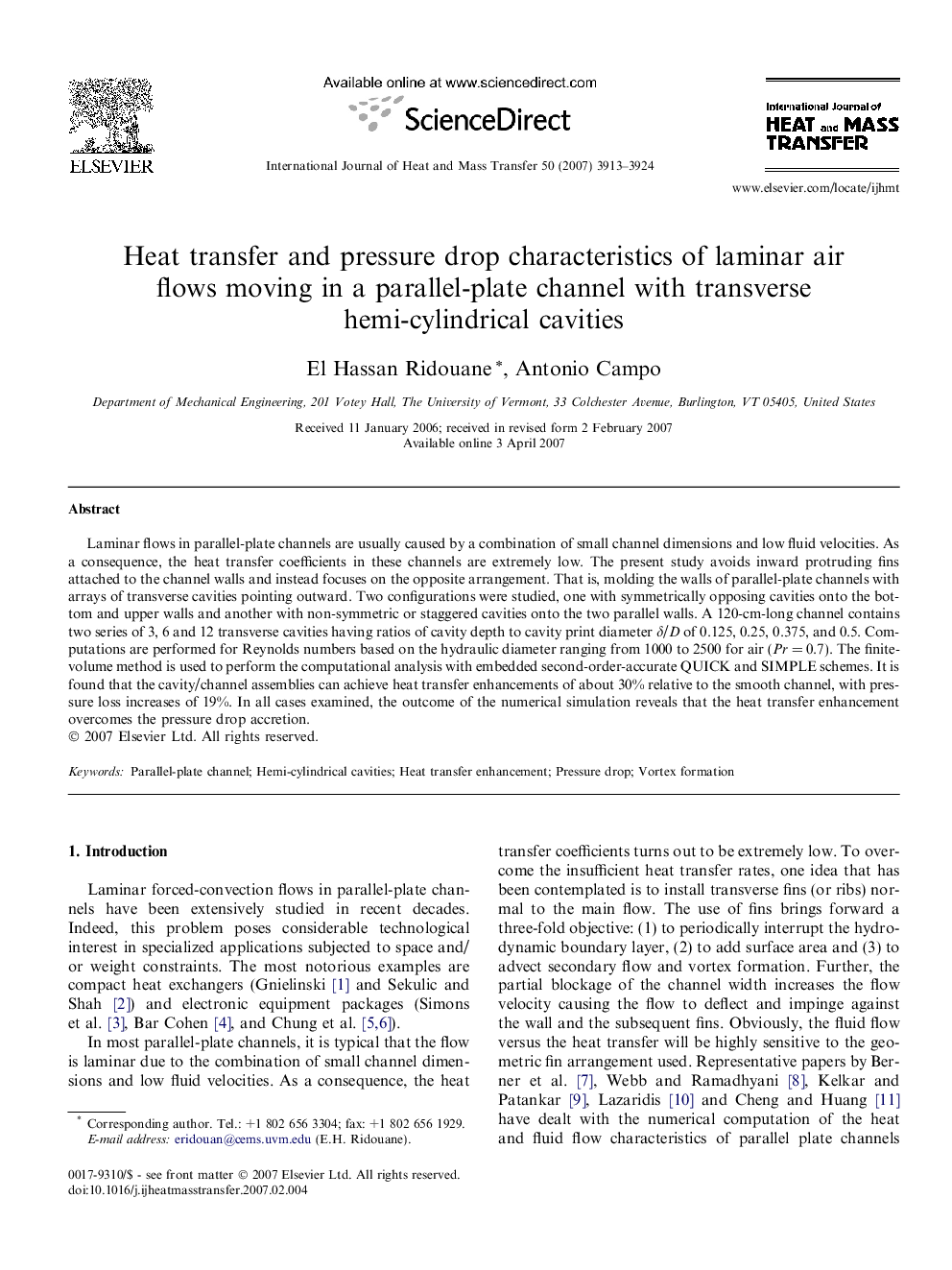| Article ID | Journal | Published Year | Pages | File Type |
|---|---|---|---|---|
| 663074 | International Journal of Heat and Mass Transfer | 2007 | 12 Pages |
Laminar flows in parallel-plate channels are usually caused by a combination of small channel dimensions and low fluid velocities. As a consequence, the heat transfer coefficients in these channels are extremely low. The present study avoids inward protruding fins attached to the channel walls and instead focuses on the opposite arrangement. That is, molding the walls of parallel-plate channels with arrays of transverse cavities pointing outward. Two configurations were studied, one with symmetrically opposing cavities onto the bottom and upper walls and another with non-symmetric or staggered cavities onto the two parallel walls. A 120-cm-long channel contains two series of 3, 6 and 12 transverse cavities having ratios of cavity depth to cavity print diameter δ/D of 0.125, 0.25, 0.375, and 0.5. Computations are performed for Reynolds numbers based on the hydraulic diameter ranging from 1000 to 2500 for air (Pr = 0.7). The finite-volume method is used to perform the computational analysis with embedded second-order-accurate QUICK and SIMPLE schemes. It is found that the cavity/channel assemblies can achieve heat transfer enhancements of about 30% relative to the smooth channel, with pressure loss increases of 19%. In all cases examined, the outcome of the numerical simulation reveals that the heat transfer enhancement overcomes the pressure drop accretion.
